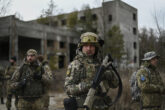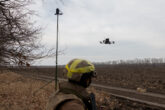June 15, 2017
Toward an “Open Source” Maritime Force Structure
The U.S. Navy’s updated Cooperative Strategy for 21st Century Seapower outlines several key themes and areas of development for the sea services as they continue the transition from the focus on the land wars in Afghanistan and Iraq.1 Some are new, a few are traditional, and several provide an interesting perspective on previously gestating concepts. One item of particular interest, and the focus herein, is the call to “expand the practice of employing adaptive force packages, which tailor naval capabilities to specific regional environments.”2 This seems like something that should be fairly intuitive, something that should evolve naturally as the sea services adapt to new and challenging circumstances. However, the argument here is meant to suggest something broader, a more conceptual rethink of how the maritime services, collectively, develop and deploy force structure packages. In short, all three maritime services should work toward the creation of an integrated, open framework for force development and deployment. A framework which replaces the practice of haphazard or incoherent deployment of assets, deployments with little or no connection between platforms deployed and overarching strategic aims. Abandoning a practice that indelicately pushes standardized—one size fits most—force packages into meeting unique operational requirements, and instead develop a system that identifies operational requirements and allows the relevant services (even when acting in concert with partner nations) to more precisely match particular capabilities to unique operational requirements.
An open source framework that incorporates the entire panoply of American maritime assets could radically improve the ability of service and theater commanders to make the most of available resources in responding to the necessities of policy and operational planning. At the same time, such a framework would translate the nuts and bolts of operational planning into a strategy-driven budgetary and policymaking process. Breaking the often-bemoaned cycle of budget planning driving strategy, the two would essentially become mutually reinforcing.
The full report is available online.
More from CNAS
-
Defense / Transatlantic Security
When Defense Becomes Destruction: Austria-Hungary’s Mistake and Ukraine’s RiskThis article was originally posted on War on the Rocks. The southeastern Polish city of Przemyśl, with its elegant 19th century Habsburg-era train station, remains one of the ...
By Franz-Stefan Gady
-
Defense / Transatlantic Security
Ukraine’s Catch-22 MomentThis article was originally published in the Financial Times. In Joseph Heller’s wartime classic, Catch-22, the protagonist Yossarian seeks out the US army surgeon Doc Daneeka...
By Franz-Stefan Gady
-
CNAS Insights | Budgetary Own Goals Undermine “Speed and Volume”
On November 7, Secretary of Defense Pete Hegseth laid out a plan to overhaul the Department of Defense’s (DOD’s) acquisition system. Placing an emphasis on delivering new capa...
By Philip Sheers, Carlton Haelig & Stacie Pettyjohn
-
Drones: Who Is Making the New Weapons of War?
From Ukraine and Russia to Gaza and Sudan, drones have become a key weapon of war. Which companies are making them, and profiting from this rapidly expanding but controversial...
By Stacie Pettyjohn




